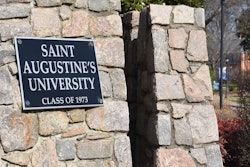Minority students accounted for half of the growth in bachelor degree attainment over the last 20 years, and minorities with advanced degrees are more likely to have attended traditionally White institutions, according to a new report released by the U.S. Department of Education’s National Center for Education Statistics (NCES).
“The Condition of Education 2007” shows that although the percentages of students who were minorities were similar across types of 4-year institutions, minority students who attended doctoral and master’s institutions were more likely to be at an institution with a low-minority enrollment than at one with a high-minority enrollment. However, minority students who attended other 4-year institutions were more likely to be at an institution with a high- rather than low-minority enrollment, says the report.
In 2002, Blacks were more than twice as likely as Hispanics to attend an institution where they made up at least 80 percent of the total enrollment (12 vs. 5 percent) thus showing the continuing relevance of historically Black colleges and universities.
The number of bachelor’s degrees awarded increased by 33 percent between 1989-90 and 2003-04, while the number of associate’s degrees increased by 46 percent. Minority students accounted for half of the growth in bachelor’s and associate’s degrees.
INSERT TABLE 1
Female college enrollment continues to surpass male enrollment since 1978.
“The gender gap has since widened and is expected to continue to grow,” says the report.
The report shows that in 2004-05, earning a business degree was popular because it was made up of 16 percent of all associate’s degrees, 22 percent of bachelor’s degrees and 25 percent of master’s degrees.
According to NCES Commissioner Mark Schneider, “Between 1997-98 and 2004-05, the field of computer and information sciences grew by nearly 100 percent at the associate’s level and by 57 percent at the master’s level. At the doctoral level, the field of health professions and related clinical sciences grew by nearly 200 percent.”
Among low-income dependent undergraduates, the percentage taking out student loans remained steady between 47 and 48 percent from 1992-93 and 2003-04, while the percentage of students receiving federal grants jumped from 68 to 72 percent during the same period.
Minorities make up 42 percent of public school enrollment, the report says, and between 1997 and 2005, the number of students taking AP exams more than doubled to about 1.2 million. The average number of credits earned by high school graduates increased from 21.7 credits in 1982 to 25.8 credits in 2004. More high school students are taking advanced courses in mathematics and sciences, with a growing number of Black and Hispanic students taking the AP exams more than any other racial/ethnic group.
“The recent emphasis on mathematics and science in the high school curriculum has raised some concerns that growth in these and other high priority subject areas has squeezed out courses in other areas, such as the arts and history,” says Schneider. “We have not found this to be the case. In fact, credits earned in other subjects have increased at the same time.”
Asian/Pacific Islander graduates were found to have completed advanced coursework in science, mathematics, English and a foreign language more than any other racial group. For example, 69 percent of Asian/Pacific Islanders completed an advanced mathematics course, compared with 54 percent of Whites, 42 percent of Blacks, 34 percent of Hispanics, and 22 percent of American Indians.
INSERT TABLE 2
To access the report online, visit http://nces.ed.gov/programs/coe/index.asp
© Copyright 2005 by DiverseEducation.com















